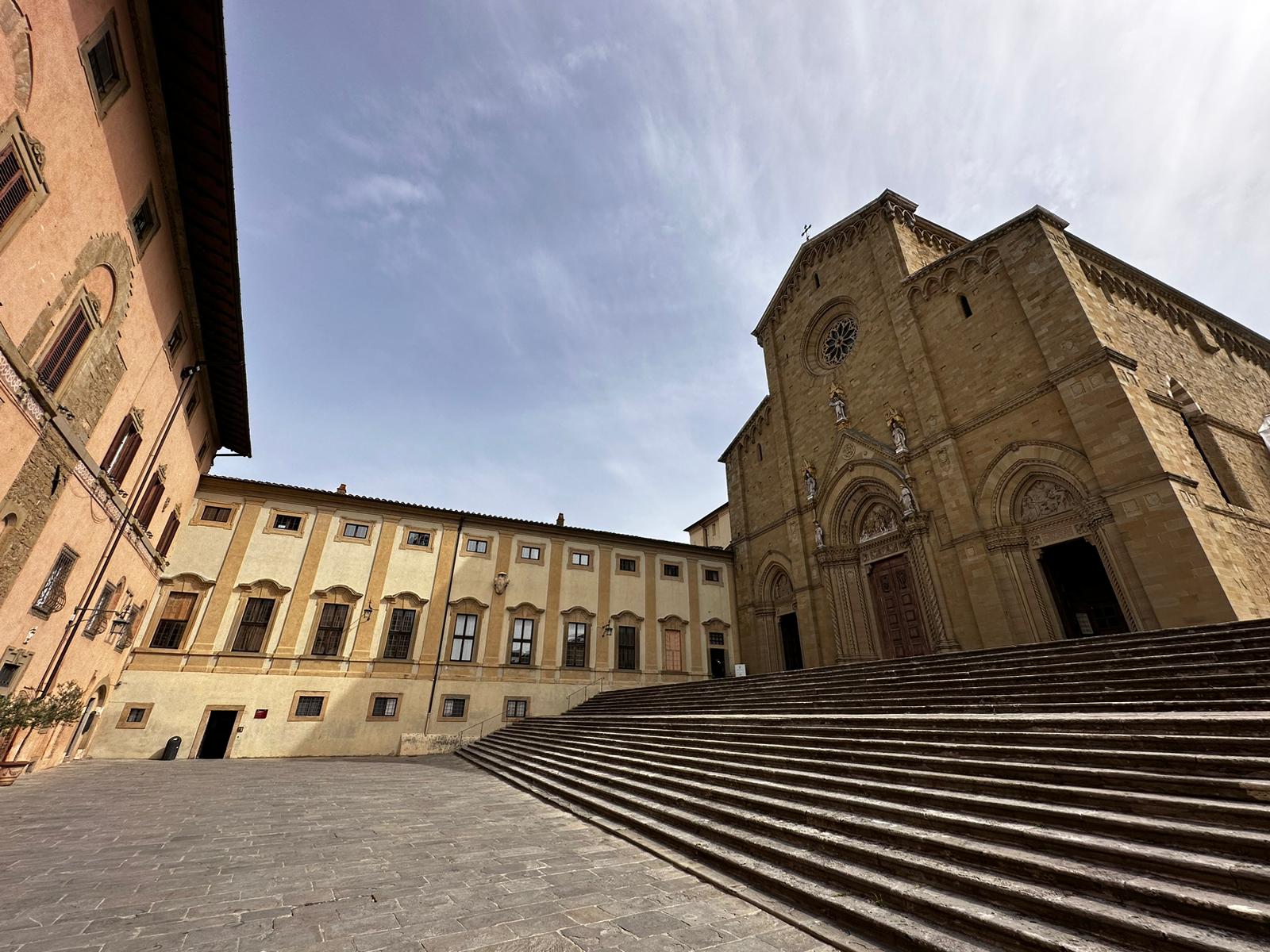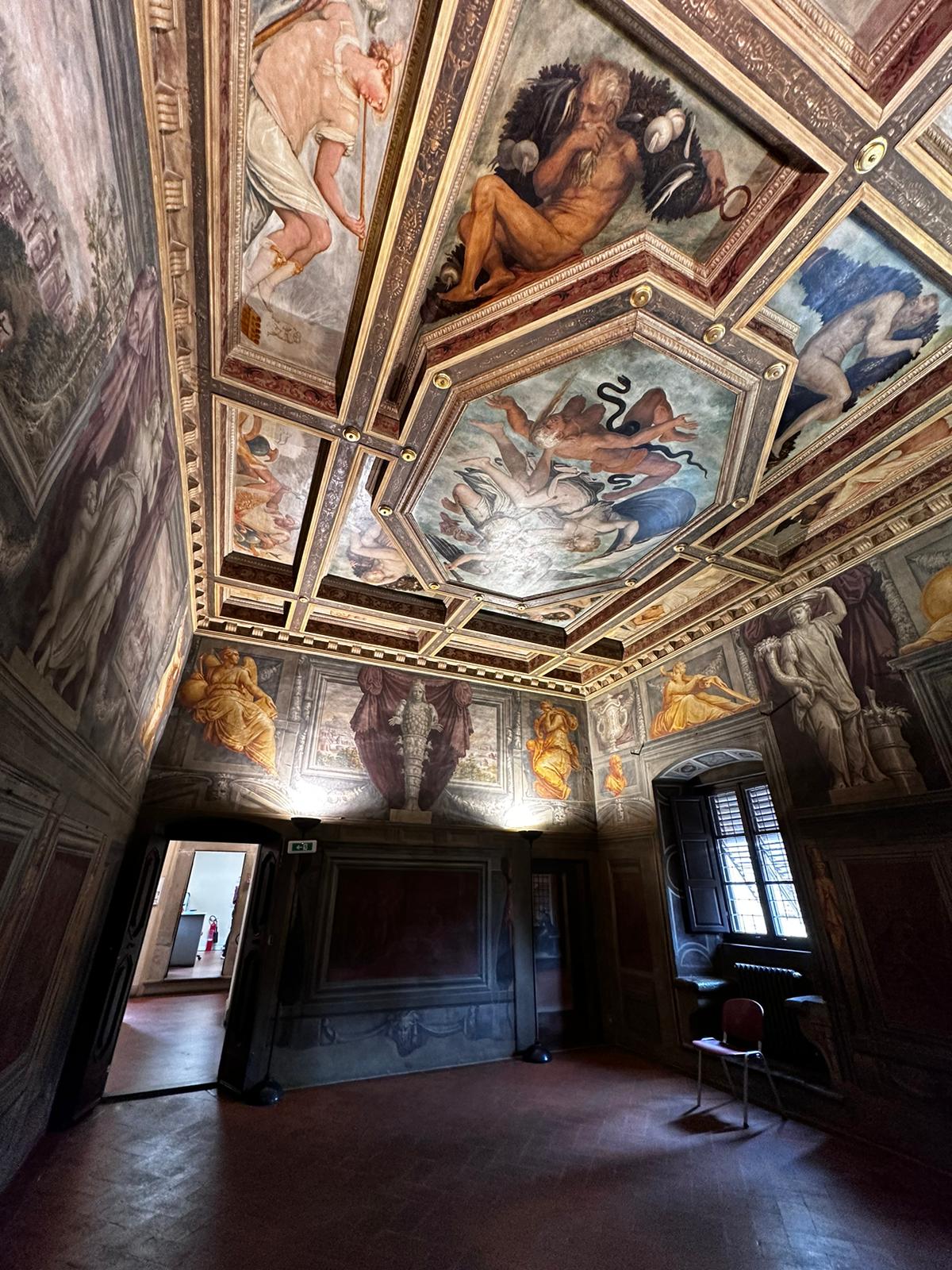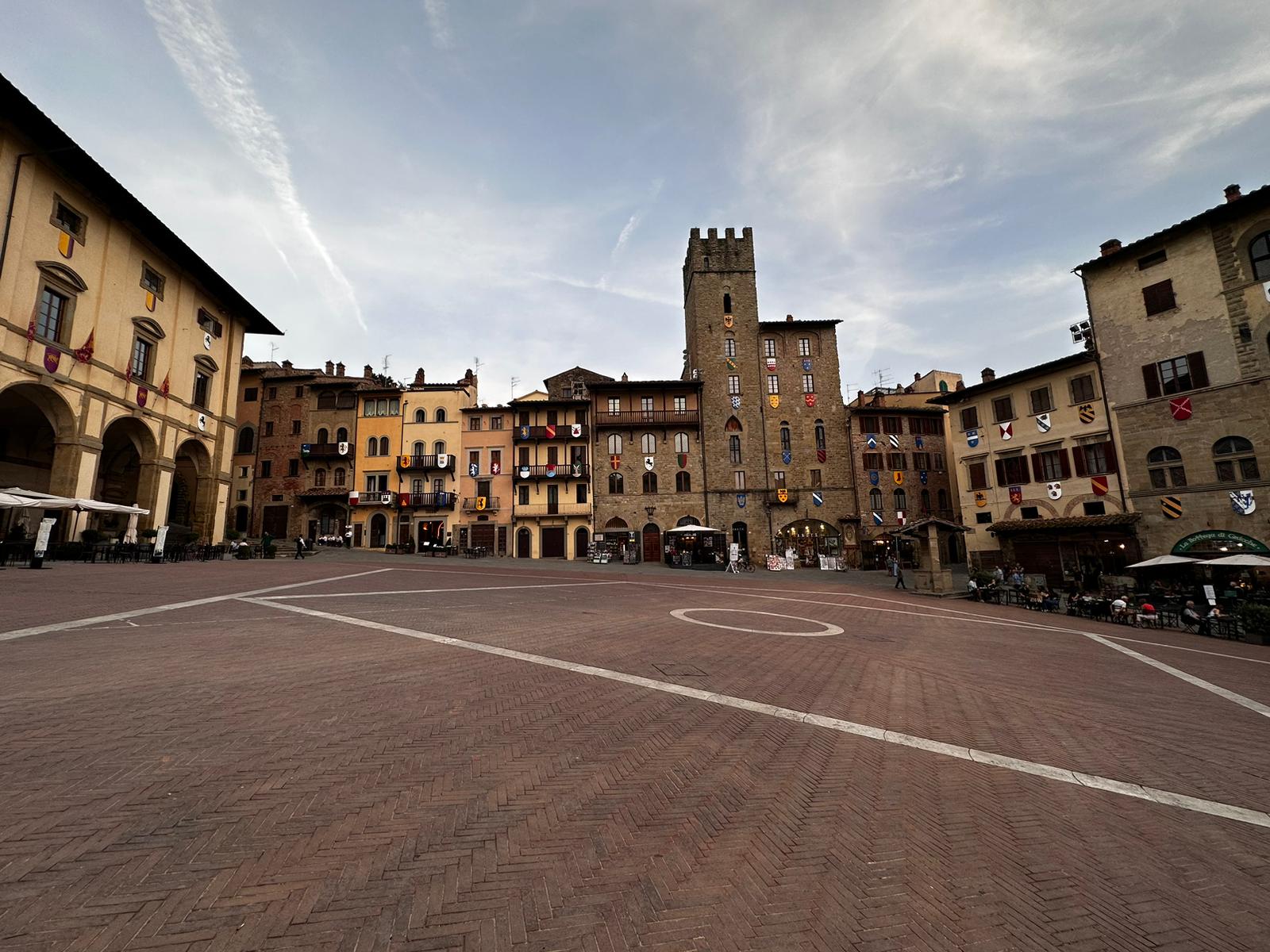Arezzo
What to do
The small city of Arezzo, located in south-eastern Tuscany, stands on a hilltop overlooking the four valleys: Valtiberina, Casentino, Valdarno and Valdichiana. An ancient city suspended in time between past and present, where art, culture and history characterise every corner of the town.
CATHEDRAL SAINT PETER AND DONATO

The Cathedral of Arezzo, dedicated to Saints Peter and Donato, is located in the upper part of the city on top of the San Pietro hill. The building, built on an ancient early Christian church, has a Gothic layout with some hints of Art Nouveau style as the façade was finished between 1900 and 1914. The interior, divided into three naves and marked by five bays, features a polygonal apse. The artistic magnificence is reflected in the works of artists such as Piero della Francesca, Giorgio Vasari and Andrea della Robbia. Attracting the visitor’s attention are the seven stained glass windows of the Marcillat cycle, a true masterpiece of glass art.
CASA VASARI

Giorgio Vasari, art historian and multifaceted artist, was always tied to his home town of Arezzo. The artist was always attached to his hometown and his home in Arezzo, so much so that he presented his ‘refuge’ for it. The house consists of three floors, the basement, the stately flat and another second floor. A geometrically structured Italian-style hanging garden extends around the house. A particularly refined residence that Vasari personally frescoed to celebrate the art world, artists and himself. The rooms also contain paintings documenting the work of several artists trained in the Vasarian school such as Mirabello Cavalori, Maso da San Friano, Francesco Morandini known as Poppi, Giovanni Stradano, Santi di Tito, Alessandro Allori and Jacopo Zucchi.
PIAZZA GRANDE

Piazza Grande is the beating heart of Arezzo’s historical centre. Unique for its trapedial and slightly inclined shape, it is characterised by a symmetrical alternation of buildings from various eras that give it a scenographic perspective. Its current appearance dates back to the 16th century when the splendid Palazzo delle Logge was built, a design that stands out for its lines signed by Vasari.

